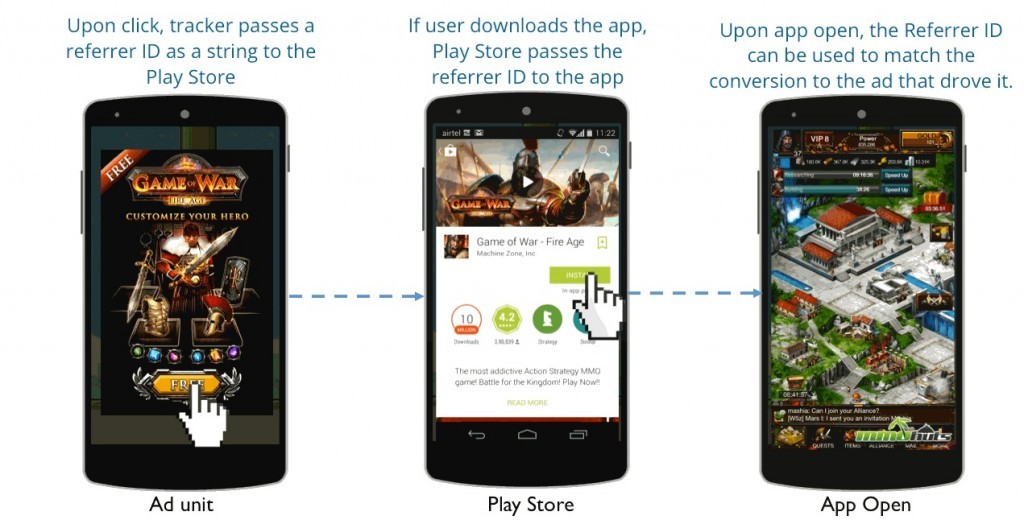Fuel campaign performance with laser-focused targeting

To many, the world of mobile ad attribution might look complex and patchy, where two of the most popular mobile tracking parameters: Device Identifiers and Device Fingerprinting, are fighting a constant battle between maximum inventory coverage and minimal losses.
On Android devices, another ad tracking identifier called the Google install_referrer has been in play since long. While it shows a lot of promise with 100% accuracy for tracked downloads across mobile web and app inventory, it is still not free from the vice of attribution losses. Let us look at how the Install Referrer works to understand this better.
How does the Install Referrer work?

The Install_Referrer is a unique string code that is passed to the Play Store whenever a user clicks on the ad. The same code is broadcasted by the Play Store to the app when it is downloaded. Upon app open, this code is passed to the tracker which looks for a successful match to attribute the conversion to its source.
Unlike fingerprinting, the Install Referrer is independent of the device and does not change with the changing device parameters, thereby nullifying the possibility of a false match/mismatch. Hence, the attribution is 100% accurate.
When does the install_referrer fail to track a conversion?
Attribution loss due to the install_referrer can happen due to one of the following reasons:
All these reasons contribute to an attribution loss of about 20-30% for the install_referrer.
What identifier should you be using for tracking?
Each identifier available on Android can help in closing the gap on attribution losses when used in conjunction with each other, based on how much coverage & accuracy they offer on mobile web and app inventory.
*Loss percentage measured on InMobi’s Conversion Tracking Platform
Although tracking through Device IDs is the best and most accurate method for attribution, it may not be a sufficient strategy to use, as they are supported only on SDK inventory.There is a need therefore, to couple it with one of the other two methods to maintain a necessary balance between inventory coverage and accuracy.
For minimal losses, InMobi recommends using all three methods for tracking your ad campaigns. On iOS, where the equivalent of the install_referrer is absent, the best option is to utilize Device Fingerprinting together with Device Identifiers for tracking.
To get the most out of your ad campaigns, make sure your tracker supports the Install Referrer from Google. To know more about the install_referrer, please visit the campaign tracking page for Google Analytics.
Register to our blog updates newsletter to receive the latest content in your inbox.